Recent Articles
Popular Makes
Body Types
2021 Toyota Corolla Road Test and Review
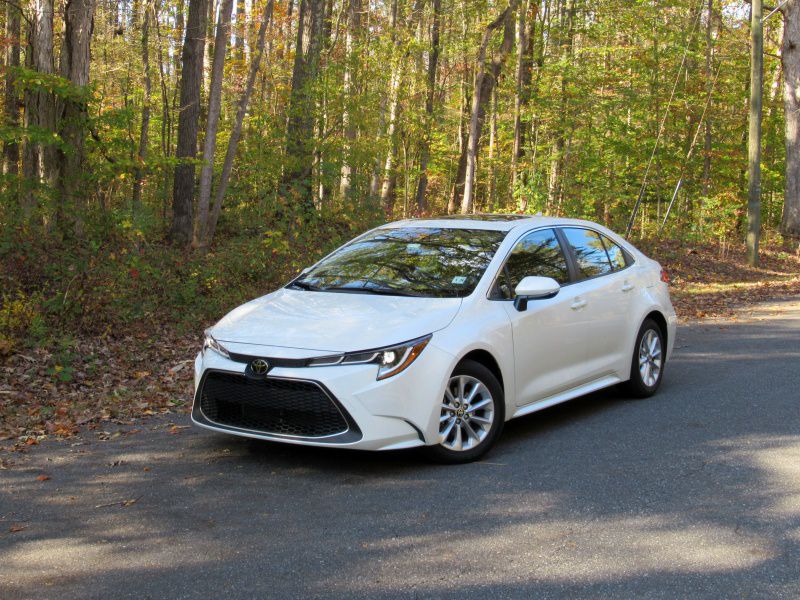
2020 Toyota Corolla XLE ・ Photo by Brady Holt
The Toyota Corolla has been one of America’s best-selling cars for decades. That’s typically not because this compact sedan wins over the automotive press with its gorgeous styling or sporty performance. Rather, it’s because the Corolla is an affordable way to get Toyota’s sterling reputation for reliability.
Today’s Corolla does even more. This isn’t merely basic but solidly built transportation. The current Corolla, introduced as a 2020 model, looks sharper, drives better, and has a better-finished interior than past generations. Of course, the Corolla’s competitors keep getting stronger, too. While many Corolla buyers are happy to stick with their reliable winner, we’re going to evaluate how it fits into a crowded marketplace of excellent compact sedans. Keep reading to learn more about the Corolla’s pros and cons to see if it’s the best one for you.
Affordable Pricing
Affordability is key to the Corolla’s success. It’s not the least expensive compact sedan you can buy, but Toyota doesn’t command a steep price premium for this highly respected name.
The 2021 Toyota Corolla sedan starts at $19,825 with a long list of standard features. The L model isn’t so sparsely equipped that you could never own it, providing a long list of convenience, comfort, infotainment, and safety features. But most people will spend a bit more for the volume-leading LE, priced from $20,275, to add a keyfob for remote door locking/unlocking (singlehandedly justifying the price bump), a larger infotainment touchscreen, automatic climate control, and heated side mirrors. The XLE, $24,225, brings leatherette upholstery, heated front seats, a power driver’s seat, alloy wheels, push-button starting, and a moonroof. The SE, $22,275, is a $2,000 premium over the LE with similar features except for dressier exterior and exterior details and a larger engine. The same is true of the XSE versus the XLE, though in this case it’s just $1,500 extra. New for 2021, an Apex Edition option package on the SE and XSE upgrades the suspension and tires for sportier handling.
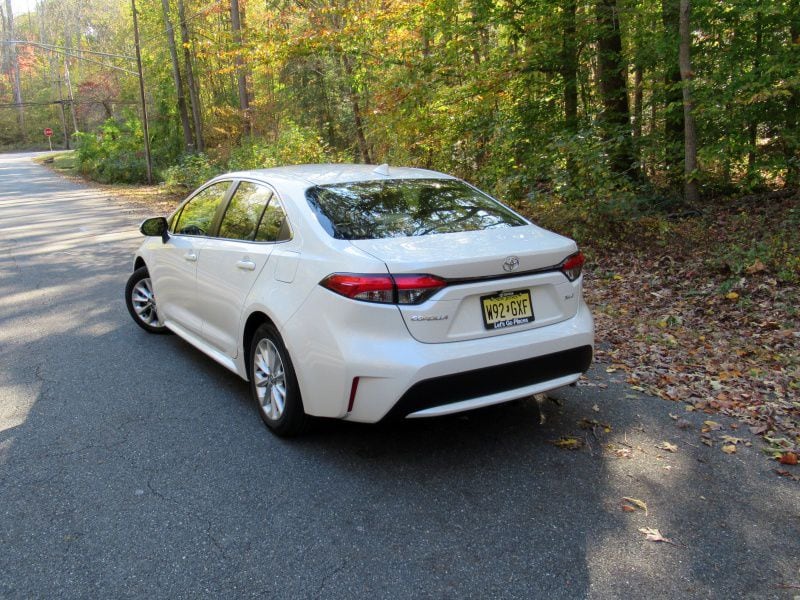
Photo by Brady Holt
Sharp Styling
Though it’s known for being conservative, the Corolla has picked up more style in recent years. The 2014 to 2019 model became chunky and assertive, while the 2020 redesign brought slimmer, crisper headlights for a subtly assertive squint. A slim black grille connects the two headlights, with a larger opening occupying the front bumper below it.
Though sharper than before, the Corolla doesn’t have an in-your-face design like the Honda Civic or the upcoming Hyundai Elantra — if you don’t want your car to draw attention, the Corolla will comply, especially from the rear end. We also appreciate the way Toyota didn’t leave prominent placeholders to indicate where optional foglights would have been. Instead, the dressy sport-themed models (pictured here) include a redesigned front bumper, along with bigger, flashier alloy wheels and a rear lip spoiler. And even without the fog lights, Corollas like our XLE test vehicle still look sharp.
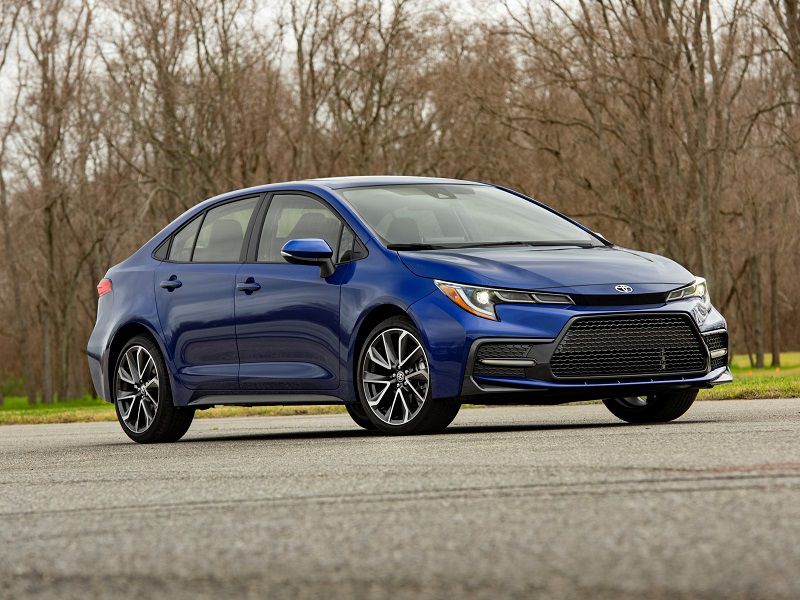
Photo by Toyota
Modern But User-Friendly Dashboard
Toyota has long been known for user-friendly controls and high-quality interiors. Not every Corolla has lived up to that, but the current model is strong on both counts.
The Corolla’s dashboard clearly delineates the upper dash from the center console, providing a distinctive and minimalistic aesthetic without compromising functionality. The infotainment touchscreen (7 inches on the base model, 8 inches on all other trim levels) sticks out from the top without being totally perched atop the dashboard, and simple buttons and knobs are along its sides and below it. New for this year, the system supports Android Auto smartphone integration, joining the Apple CarPlay it already offered to iPhone users. The large, clear, blue-hued gauges look upscale, and cabin materials are also significantly richer than past Corollas. Still, this isn’t the small sedan you’d pick for maximum luxury. You can’t get genuine leather upholstery, and some details still come up short: The doors and exterior door handles feel light and flimsy, and the center console bin slams closed violently if you don’t gently guide it down.
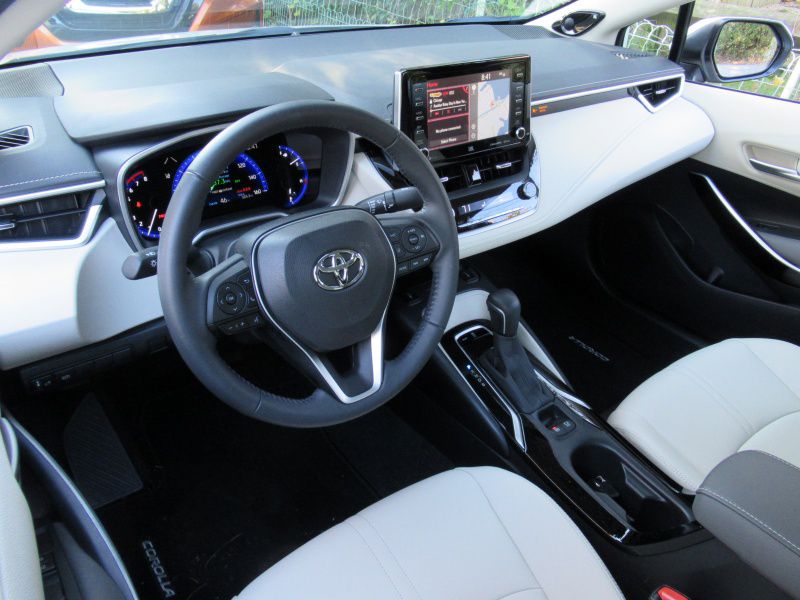
Photo by Brady Holt
Decently Spacious
The previous-generation Corolla was one of the roomier compact sedans, with generous rear legroom that made it a great fit for Uber service. Instead, the current model is right in line with what you’d expect from a compact sedan.
Four adults will fit without too much complaint, but only the front seats could truly be considered comfortable, and the center-rear position is for kids and emergencies only. We had no objections to the front seats, but sporty models like the Mazda3 will hug you better for spirited driving. Trunk space is decent but unexceptional for a compact sedan at 13.1 cubic feet.
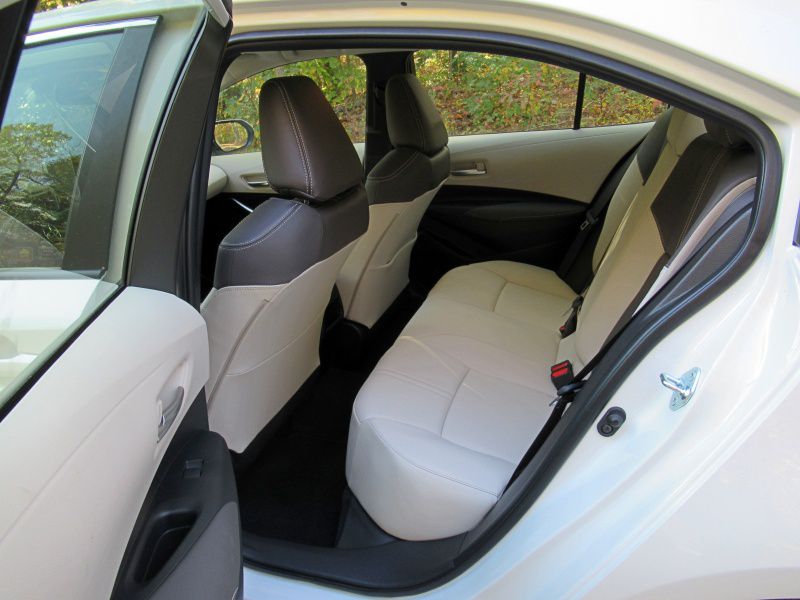
Photo by Brady Holt
Choice of Engines
The Corolla sedan comes with a choice of two engines. The most popular trim levels (including our test car) have a 1.8-liter four-cylinder engine that makes 139 horsepower and 128 lb-ft of torque, which is on the low side for the compact sedan class. The sport-themed SE and XSE upgrade to a more competitive 2.0-liter four-cylinder with 169 horsepower and 151 lb-ft of torque.
Both engines come standard with a continuously variable automatic transmission, but the 2.0-liter is also offered with a six-speed manual — an increasingly rare treat, especially since it has decent shift action and isn’t restricted to an undesirable base model. The 2.0-liter is not only quicker and quieter than the 1.8-liter, but it’s also more fuel-efficient. EPA ratings vary slightly by trim level, but generally they are an excellent 31 mpg in the city, 40 mpg on the highway, and 34 mpg overall with the 2.0-liter, and a still-decent 30 mpg city / 38 mpg highway / 33 mpg overall with the 1.8-liter. The excellent Corolla Hybrid, sharing its powertrain with the Toyota Prius, tops 50 mpg.
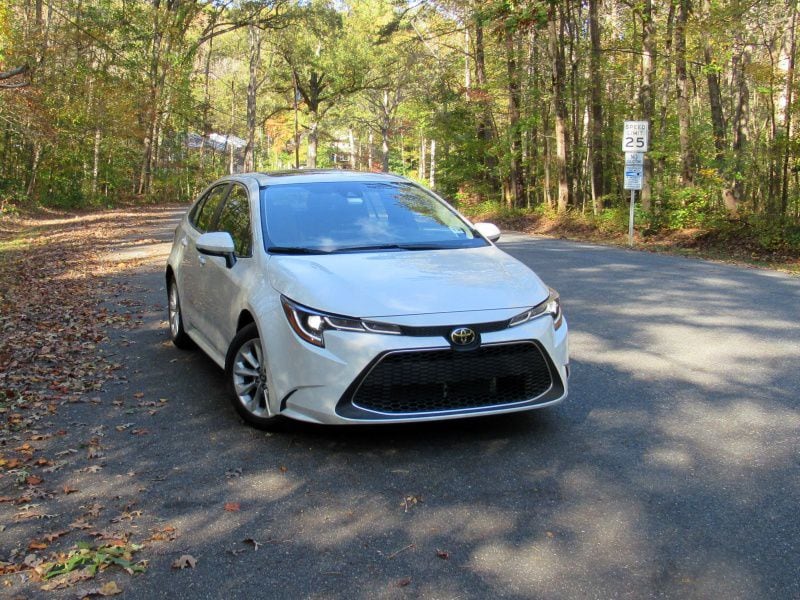
Photo by Brady Holt
More Pleasant Than Truly Sporty
New for 2021, the Corolla Apex Edition is a limited-run performance package that brings a lowered and stiffened suspension for improved handling, along with available performance-focused summer-only tires. We predict the biggest difference will be on a racetrack, where the tires will show off their superior grip. But no Corolla model is a true sports sedan.
And that’s fine. The latest Corolla drives far better than the previous generation, whose steering felt strangely weighted and unnatural, and which wanted to wander on the highway. Today’s model has light, easy, natural steering that sends the car where you want it without fuss or concern, though without stirring excitement. The ride is smoother than before, too, at least if you skip the Apex Edition. The main complaint is the engine, especially the tested 1.8-liter — it’s noisy and underpowered by today’s standards. Even the 2.0-liter isn’t fantastic, though it’s respectably peppy given its gas mileage. Some buyers will appreciate that Toyota doesn’t include turbochargers like many modern small cars, keeping the engines simpler.
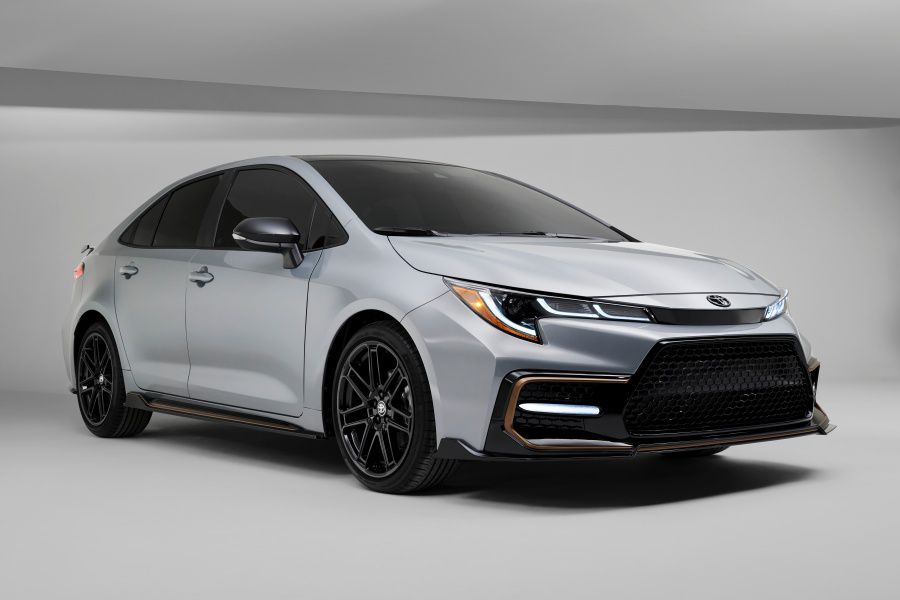
Photo by Toyota
Top Safety Pick
The 2021 Toyota Corolla has more standard safety features than most of its competitors, despite its competitive pricing. Every model includes a forward-collision warning with automatic emergency braking and pedestrian-detection capability, radar cruise control with stop-and-go functionality, a lane-departure warning with steering assistance, automatic high beams, and road-sign recognition. Some of this technology is restricted to top trim levels of competing small sedans, or not offered at all. Blind-spot monitoring is standard or optional on most Corolla models.
Another rare safety feature is new for 2021: torso-protecting side airbags for the rear seats, complementing the more typical front-seat torso airbags and the side-curtain airbags that protect front and rear passengers’ heads. The 2021 Corolla with the additional airbags hasn’t yet been crash-tested, but even last year’s model was judged a Top Safety Pick by the Insurance Institute for Highway Safety and earned five out of five stars from the National Highway Traffic Safety Administration.
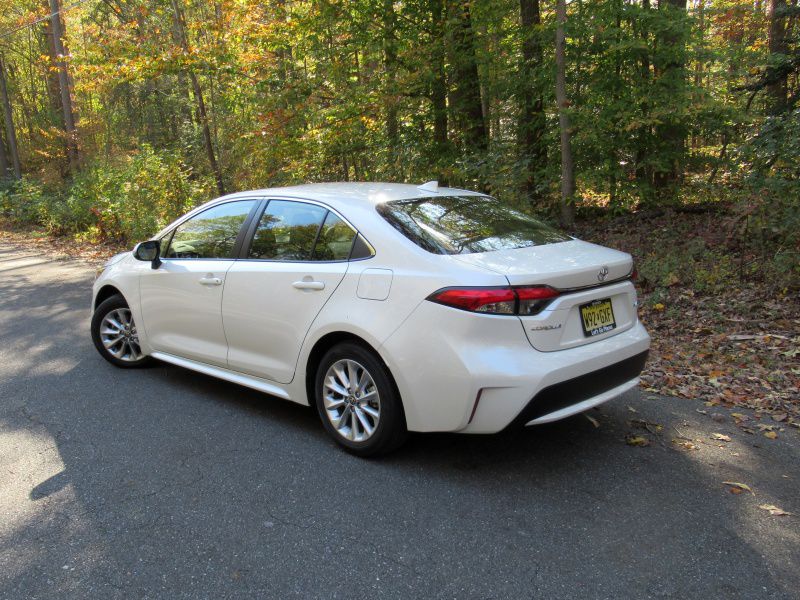
Photo by Brady Holt
Close Competitors
The Corolla’s closest alternative is the Nissan Sentra. In 2019, both were unusually spacious but unusually sorry to drive. Now, both are more stylish, sharper-handling, and less roomy than before, and a bit more expensive. The Sentra has arguably slicker styling along with a little more rear-seat room and some more upscale interior touches, while the Corolla offers a wider range of powertrains and a longer list of safety features.
The Corolla also faces off against two value-priced Korean sedans: the Hyundai Elantra and Kia Forte. They are all-around competitive at excellent prices, but the Corolla has a few more safety features and — until the Elantra’s flashy 2021-model redesign arrives later this year — a slightly more upscale interior ambiance. Meanwhile, although the cars are classic rivals, the Honda Civic offers a pretty different flavor: It’s roomier, quicker, and more agile than the Corolla, at a higher price. Which car you choose between the two comes down to which flavor you like: maximum affordability, or the driving experience and spaciousness of a higher class of vehicle. The Civic does also suffer from a dated infotainment system.
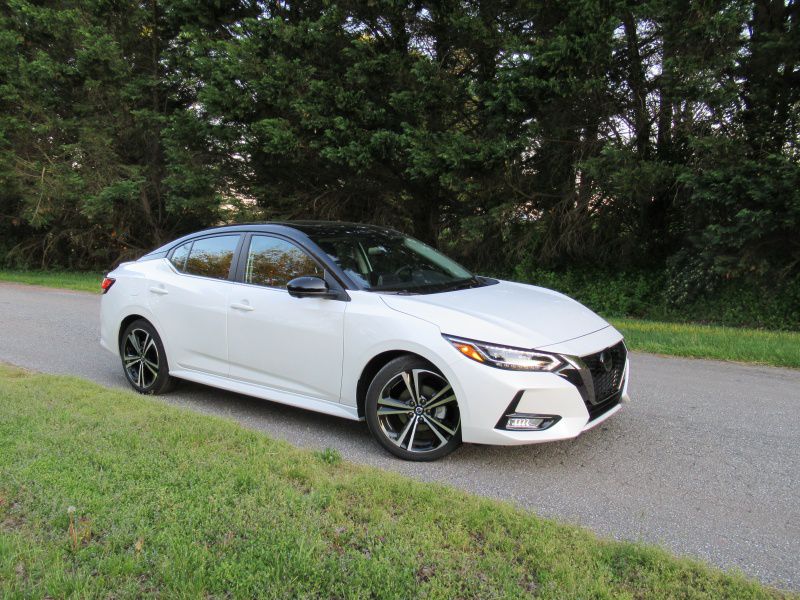
Photo by Brady Holt
A Low-Stress Choice
Lots of people buy the Toyota Corolla without carefully considering the competition, and these days, we don’t think they’ll necessarily suffer for it. The current Corolla has solved its predecessor’s most glaring deficiencies, and it’s not especially expensive to buy or operate. It’s safe, attractive, economical, and easy to drive.
That’s not to say it’s perfect. We think some loyal Corolla buyers would be impressed with the Korean competition’s even greater bang for the buck, might prefer the Sentra’s design, or could decide that the Civic’s huge interior and sportier driving dynamics are worth a couple thousand dollars extra. But as long as you’re not looking for excitement, the 2021 Toyota Corolla is a worthy option to consider.
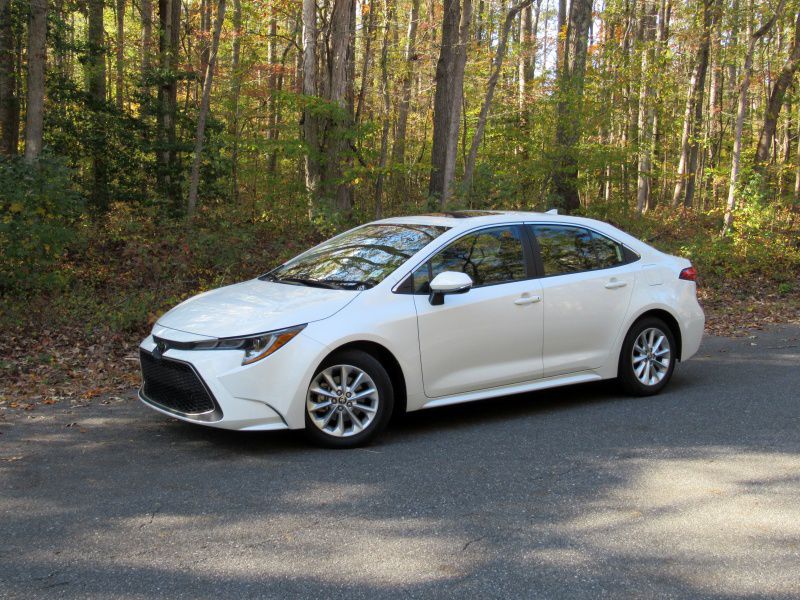
Photo by Brady Holt